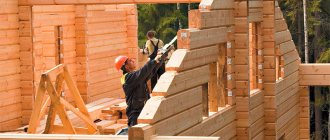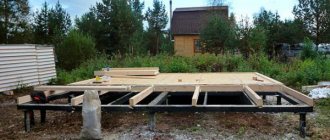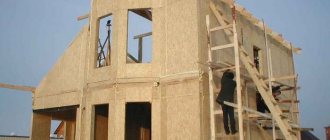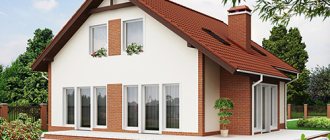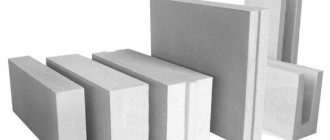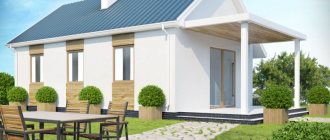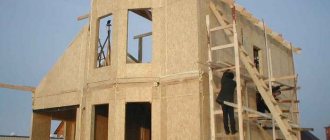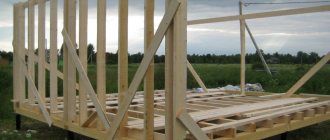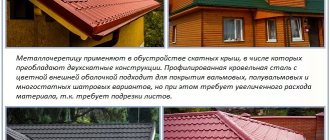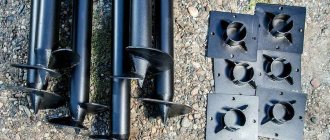Features of installing railings for stairs
Railings are responsible for the safety of movement and are also a decorative element in the interior. Installing railings is a controversial process. Due to the different materials from which the railings are made, installation is carried out differently. Railings are made of plastic, wood, metal, glass and combinations.
We dedicate today's article to an overview of different methods of installing railings. Together with us you will learn what materials they are made from, how they are designed, and in what areas they are used.
General rules for railing design
To begin with, let us once again remember the purpose of the railing. They are responsible for two functions: decorative and protective.
Protective function – safe movement up/down. Fences must meet all safety requirements. But we must not forget about the aesthetic appearance. This is the same design element that should be in harmony with the surrounding environment.
The design of the railing consists of the following elements:
- Baluster;
- Stolbikov;
- Screens;
- Handrail.
Before installing stairs and railings, it is important to consider several safety rules:
- Safety;
- Railing height – this parameter is selected individually. The minimum height of the handrails is recommended - not lower than 90 cm, and the maximum - 110 cm. In families where children of different ages are growing up, it is better to make several handrails for comfortable movement;
- The width of the railing - the standard is 3-7 cm. Again, everything depends on individual capabilities, desires and preferences;
- It is important to maintain the ratio of balusters to handrails. Experts recommend installing a baluster on each step. This is a classic staircase design;
- Wooden stairs are better suited for decorating residential buildings. They create additional comfort;
- In large shopping centers or two-story buildings, it is recommended to install 3 or more crossbars. These are support posts.
The railing follows the shape of the staircase. If it is screw-shaped, then the fence a priori cannot be straight. Curved structures are not easy to install yourself, so this is done by specialists. Yes, and they are usually made to order.
What does the stair railing consist of?
Railings or stair railings are not monolithic structures. In order to ensure the necessary strength, as well as ease of use, they consist of several parts, each of which performs its own function.
Components of fencing elements for stairs
The design of stair railings includes three components - balusters, handrails and infill. Balusters play the role of supporting pillars. The main burden falls on them. This part of the structure is installed along the edges of the flight of stairs (including flights of stairs) at a distance of 50-60 cm from each other. Their installation is mandatory when installing rotating parts of the structure.
Horizontal stair handrails serve mainly to support a person during descent and ascent. This part is connected to the balusters by welding or using special fasteners. Stair railings come into direct contact with human hands, so they must have ideal smoothness and comfort. Handrails can be horizontal or inclined, depending on the design of the staircase. Railings are critical to injury prevention and safety. A staircase with reliable, durable railings, built in a private home or an industrial enterprise, will always be a guarantee of comfort and reliability.
Handrails, connecting the support pillars, provide a strong connection to the entire staircase. They can be located at a height of 90 to 110 cm. This parameter is selected depending on the height of those using the stairs. If there are small children or short residents in the house, it is possible to install a second level of handrails.
The infill is an element of the staircase and installed fencing, which is more of a design touch. Support posts are usually installed at a distance of 60 cm from each other. If there are no children in the house for whom this distance is too wide, then you can do without filling. To protect the dangerous space, additional vertical balusters, horizontal brackets, forged patterns, glass, and plastic are used. The solution to this problem can be either design or purely practical.
Type of railing
Railings vary in location. They are installed indoors and outdoors. It is customary to divide railings into interior and exterior.
Interior
The name speaks for itself. Interior – stairs and railings installed indoors. Most often, wooden or glass structures are in demand inside houses and shopping centers. Preference is given to light, pastel shades.
Exterior
Exterior – external stairs and railings. Usually these are concrete or iron stair structures of a dark color.
Types of railings based on material used
The main classification of railings concerns the division according to the material from which the structures are made.
The division by material does not affect the scope of application of the railings. A staircase made of any material can be used for houses, cottages or shopping centers.
We have provided the most detailed classification possible. We hope that thanks to it you will be able to figure out what type of structure you need.
Wooden stair railings
Wooden fencing is a classic option that will never lose popularity. You will ask why?". We will answer you that everything is simple. Wood in the interior is always natural, natural and environmentally friendly. Wooden railings look neat and discreet. In addition, wood is a fairly wear-resistant material.
The modern market offers customers a wide choice of wood: from the most expensive to budget and affordable. And how wide the range of colors is – it’s amazing!
When choosing wooden railings, look for ones that are made from wood with a low resin content. The wood must be well dried. After a certain period of use, a staircase made of insufficiently dried wood can lead to distortion and become warped. And this is a violation of safety regulations.
Main characteristics of wood railings:
- Safety and naturalness;
- Strength, reliability;
- Aesthetics;
- Durability after additional treatment with special solutions;
- Pleasant to the touch;
- Any design and shape can be made;
- Relatively inexpensive;
- Can be combined with different materials;
- Possibility of self-production and installation.
Wooden railings do not heat up excessively in hot weather and tolerate severe frosts well.
What types of wood are best used to create railings:
- Conifers. Spruce and pine are the best inexpensive options. This type of wood lends itself well to processing. Pine has a porous structure. Therefore, when treated with antiseptic solutions, they penetrate well inside. This makes the material stronger and more durable. Spruce trees are more difficult to process and there are many knots on the surface. It has another advantage over pine - it is less susceptible to warping. And the most expensive material is larch. This is a combination of many advantages. It tolerates temperature changes and moisture well, and is not subject to fungal infections and rotting.
- Deciduous. One of the popular options is oak. It has a high tannin content. Fencing made of such wood is not subject to fungi and rotting processes. The staircase structure will last a long time and retain its original appearance. One significant drawback is the high cost. Products made from beech are cheaper, but are more susceptible to fungal diseases. Because of its affordable price, beech is often used to create railings. Birch fences are also in demand, but they rot often and quickly. Not everyone likes the design of the birch tree - this is also one of the drawbacks.
Metal railings
The second most popular material for making railings is metal. Metal fencing experienced its peak in popularity in the early 2000s. Back then, office and shopping centers chose this type of fencing.
Interest in metal railings has subsided a little, but they are still used. This is due to the following factors:
- Good service life - minimum 50-60 years;
- Stylish, beautiful and modern;
- No need for constant care;
- Anti-corrosion coating;
- Fire safety.
Metal fencing is not ideal. The main disadvantage is the appearance of scratches. Do not forget about careful operation, then the stair railing will last for many years.
Forged railings look good. They are made using hot or cold forging. The first involves creating interesting, curved railing shapes. And the second is used to create simple, straight products.
They are made of steel or cast iron. Forged fences are installed whole or from separate blocks. Sections are welded at the installation site.
The forged product looks interesting thanks to its openwork weaves. Specialists make such fencing to order. Only the cost of an individually designed structure increases significantly.
Wrought iron railings require special care. They should be coated with an anti-corrosion compound.
Some products may be made of wood and steel. They come in several types:
- Straight - mounted on platforms between flights of stairs;
- Corner - installed on open blocks;
- Oblique - used for installation on sloped stairs.
Advantages of forged fencing:
- Interesting shapes;
- Durability;
- Resistance to environmental factors.
There is a drawback, and it is the high cost.
Glass railings
The glass stair railing belongs to the minimalist style. It looks beautiful, stylish and is used practically.
Advantages:
- Fast, easy installation;
- Wide range of materials for manufacturing;
- Durability of use.
Flaws:
- High price;
- Difficult maintenance;
- Constant care.
To create a fence, two types of glass are used:
- Laminated – glass sheet, the surface of which is covered with a transparent film;
- Tempered – high-strength glass. Strength is explained by production technology. During the manufacturing process, the glass is heated, blown from different sides and quickly returned to normal temperature.
Plastic railings for stairs
Plastic products are a practical, budget-friendly and simple option. Plastic is used for its ease of maintenance and durability.
Plastic handrails are round, oval or rectangular. How to make the required form? Easily! Just heat the surface of the plastic with a regular hairdryer to 90°C.
The heated surface softens and can be given any shape. This allows the use of plastic fencing for screw and complex structures.
Advantages of plastic fencing:
- Lungs;
- Durable;
- Easy to care for;
- Aesthetic;
- Moisture resistant.
Operating parameters make plastic products optimal for outdoor conditions.
PVC fences can be made to look like railings made of wood or any other material. You can paint them in different colors so that they blend perfectly with the overall design.
Combined railings for stairs
Stair railings are created not only from one material. Experts have learned to combine them. Popular combinations are metal and wood, metal and glass, glass and wood. All options look aesthetically pleasing and stylish.
Concrete and stone railings
Stone railings are one of the most durable and unpretentious in terms of constant processing and maintenance. Such railings are also divided into several categories according to the type of material:
- Concrete railings are installed mainly on streets, public staircases, and on porches in public buildings. These railings look very simple and without any frills in their shape.
- Brick - brick railings are already more often found on the porch of private houses or cottages; they are also rarely used in interior spaces.
- Marble railings look luxurious and are more often used in interior spaces. Marble is a very beautiful stone and does not lose its appearance over time. Marble stair railings can be found in many ancient buildings in excellent condition. Various patterns for staircase railings and balusters are made from marble; such railings add additional majesty to the room in which they are located.
- Granite is currently widely used not only for finishing stairs and railings, but also for paving streets. Granite, along with marble, is a very noble stone and gives the room in which it is located a stylish appearance, but granite railings are still often used for public staircases. Granite railings on the porch will decorate the front entrance to any home.
- Fake diamond. Railings and stairs made of natural stone, along with their impeccable appearance, also have a fairly impressive cost. Nowadays, artificial stone is very widely used, which in its characteristics and appearance is not very different from the original, but has a lower cost.
Selecting a design type
The design of the stair railing depends on the interior or exterior of the room. Any material is suitable for outdoor stairs. But, it is recommended to find out in advance whether it is used outdoors.
Let's imagine that you decide to install plastic handrails. Should you ask store consultants or specialists how they will behave in severe frosts or hot summers?
Glass fencing looks beautiful and stylish even on the street. Glass is resistant to low and high temperatures. BUT! The material is quite fragile, especially in outdoor conditions. This drawback stops many.
A metal structure is well suited for outdoor space. It is important to choose a material with an anti-corrosion surface.
Please note that black metal will have to be tinted from time to time. And before painting, you should prepare the railings: remove rust and clean them from dirt.
Glass railings for modern interiors
Glass railings on stairs can be found both in modern homes and in shopping and business centers. Glass railings and stairs give the room a certain style; they do not block the penetration of light, and if the staircase is located in the center of the room, there will be no shading of the space behind it. Glass railings with lighting in the dark will give the staircase a spectacular look.
Glass, at first glance, is a fragile material, but it can be quite durable (armored glass is also found). In order for glass to be safely used for railings and stair railings, it must be pre-treated. Let's consider two options:
- Tempered glass - the glass is heated to a high temperature, after which sharp cooling on both sides to normal temperature gives the glass many times increased strength, such glass is resistant to impact loads, and if broken, it crumbles into small, non-sharp fragments.
- Laminated glass - to create such glass, several glasses (usually two or three) are used, gluing them with a special polymer film. Thanks to this technology, the glass remains transparent; when broken, it does not crumble and all the fragments remain glued to the polymer film. This technology is used in automobile glass.
Having compared these two technologies, we understand that it is safer to use laminated glass, since if you are high on the stairs in an emergency situation in which the glass breaks, tempered glass will not hold you, because it will break into small pieces, while laminated glass will simply will be covered with a fine mesh of broken fragments and will protect you from falling.
In addition, glass railings have a number of advantages:
- ease of installation and dismantling (if damaged, one of the spans can be easily replaced);
- many types - soundproof, frost-resistant, fire-resistant, bulletproof;
- long service life;
- safety.
The disadvantages include the high cost of such railings and the difficulty of keeping them clean; traces of touch are visible on them and dust settles.
